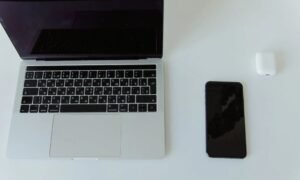Tesla Model 3 USB Ports
The Tesla Model 3 is a popular electric vehicle produced by Tesla Motors. Apart from its impressive range and acceleration, the Model 3 comes equipped with USB ports that provide various functionalities and enhance the overall user experience.
Key Takeaways
- Tesla Model 3 USB ports allow for charging and data transfer.
- USB ports are conveniently located in the front and rear of the vehicle.
- The Model 3 USB ports support various formats and devices.
The **Tesla Model 3** features multiple USB ports that serve different purposes. The two front USB ports, located in the center console, are primarily used for charging mobile devices. With the high-power output, these ports provide fast charging capabilities, allowing users to quickly charge their smartphones or tablets while on the go. The two rear USB ports, on the other hand, are mainly intended for **data transfer** and connectivity. Located in the rear seat area, these ports enable passengers to connect and use their devices without being restricted by the front USB ports.
One particularly interesting feature of the Model 3 USB ports is their wide compatibility with various devices and formats. Not only can they charge smartphones and tablets, but they can also support USB drives, music players, and other similar devices. With this functionality, users can easily play music, videos, or other media files directly from their devices, giving them more entertainment options during their journeys. *Having the flexibility to connect multiple devices simultaneously enhances the convenience and versatility of the USB ports.*
USB Port Specifications
| USB Port Specifications | |
|---|---|
| Front USB Ports | Rear USB Ports |
| USB-A | USB-C |
| Fast Charging | Data Transfer |
The front USB ports in the Model 3 are USB-A ports, which are the traditional USB connectors commonly found on most devices. These ports deliver high-power charging and are suitable for charging smartphones, tablets, and other similar devices. The rear USB ports, on the other hand, are USB-C ports. USB-C is a newer and more versatile connector that supports faster data transfer rates and can be found on many modern devices. While they may not charge devices as quickly as the front ports, they offer the convenience of data transfer and connectivity options.
*In addition to the USB ports, the Tesla Model 3 also offers wireless charging capabilities,* allowing users to charge their compatible devices without any cables. This feature further adds to the convenience and user-friendliness of the Model 3’s charging options.
Comparing USB Ports in Electric Vehicles
| Electric Vehicle | USB Port Type | Charging Speed |
|---|---|---|
| Tesla Model 3 | USB-A and USB-C | Fast Charging |
| Nissan Leaf | USB-A only | Standard Charging |
| Chevrolet Bolt EV | USB-A and USB-C | Fast Charging |
When comparing USB ports in other electric vehicles, the Tesla Model 3 stands out with its dual USB-A and USB-C ports, providing users with more flexibility and compatibility options. While the Nissan Leaf and Chevrolet Bolt EV also offer USB-A ports, the Model 3’s inclusion of USB-C ports allows for faster data transfer and compatibility with a wider range of devices.
The **Tesla Model 3 USB ports** seamlessly integrate charging and data transfer capabilities into the electric vehicle experience. With fast charging, wide compatibility, and the convenience of multiple ports, users can easily stay connected and entertained while driving their Model 3.
Final Thoughts
The Tesla Model 3’s USB ports serve as valuable features that improve the overall user experience. With a focus on fast charging, data transfer, and compatibility, Tesla has ensured that users have a convenient and versatile charging solution for their devices during their journeys. Whether it’s powering up their smartphones or connecting USB drives for media playback, the Model 3 USB ports provide a seamless and interactive experience for Tesla owners.

Common Misconceptions
Tesla Model 3 USB Ports
There are several common misconceptions surrounding the Tesla Model 3’s USB ports, which are an integral part of the electric vehicle’s technology and user experience. By addressing these misconceptions, users can better understand the capabilities and limitations of the Model 3’s USB ports.
- Myth: The USB ports in the Tesla Model 3 are only for charging mobile devices.
- Reality: While the USB ports are indeed capable of charging mobile devices, they can also be used for data transfer and media playback. The Model 3’s infotainment system allows you to play music, videos, and digital media directly from a USB device, making it a useful multimedia hub.
- Myth: All USB devices can be connected and recognized by the Tesla Model 3.
- Reality: While the Model 3 supports a wide range of USB devices, not all devices are guaranteed to be compatible. It’s important to check the vehicle’s manual for certified USB devices or consult Tesla’s support documentation to ensure compatibility. Using unsupported USB devices can result in errors or the device not being recognized by the vehicle’s system.
- Myth: The Tesla Model 3’s USB ports are exclusively for the front occupants.
- Reality: The Model 3 features USB ports in both the front and rear of the vehicle, allowing all passengers to easily connect and charge their devices. This ensures that everyone onboard can stay connected and entertained throughout the journey.
In conclusion, the Tesla Model 3’s USB ports offer more than just charging capabilities. They provide a versatile range of functionalities, allowing users to transfer data, play media, and keep their devices powered throughout their journey. However, it’s essential to be mindful of device compatibility and the locations of the USB ports to optimize their usage.

Introduction
Tesla Model 3 is a highly popular electric vehicle known for its innovative features and cutting-edge technology. In this article, we explore the USB ports available in the Tesla Model 3 and how they enhance the overall user experience. The USB ports offer convenience and functionality, making it easy to connect various devices and utilize the car’s capabilities to their fullest.
USB Port Placement
The Tesla Model 3 is equipped with several USB ports that are strategically placed throughout the vehicle. These USB ports are conveniently located both in the front and rear of the car, ensuring easy access for both the driver and passengers.
USB Port Types
The Tesla Model 3 is equipped with both USB-A and USB-C ports. This feature provides compatibility with a wide range of devices, allowing users to connect and charge their smartphones, tablets, and other accessories without any hassle.
Front USB Ports
The Tesla Model 3 offers two USB ports in the front console. These front USB ports are easily accessible to the driver and passenger, allowing them to charge their devices or connect accessories conveniently while on the go.
Rear USB Ports
In addition to the front USB ports, the Tesla Model 3 also provides two USB ports in the rear cabin. These rear USB ports are especially useful for passengers sitting in the back, as they can easily charge their devices or connect peripherals during their journey.
Fast Charging Capability
The USB ports in the Tesla Model 3 provide fast-charging capabilities. With the use of compatible devices and cables, users can benefit from rapid charging speeds, ensuring their devices are powered up quickly even during shorter trips.
USB Music Playback
The USB ports in the Tesla Model 3 also allow users to connect USB drives loaded with their favorite music. Through the car’s infotainment system, drivers and passengers can easily browse and play their preferred songs, providing an enhanced audio experience during their travels.
USB Device Integration
Besides charging and music playback, the Tesla Model 3 USB ports integrate seamlessly with the car’s software. This enables features like smartphone connectivity, software updates, and data transfer, enhancing the overall functionality of the vehicle.
USB Power Output
The USB ports in the Tesla Model 3 provide a standard power output of 5 volts and 2.4 amps. This ensures compatibility with various devices and guarantees efficient charging even for power-hungry gadgets.
USB Port Flexibility
The USB ports in the Tesla Model 3 offer versatility in their usage. Users can connect not only smartphones and tablets but also other peripherals such as gaming controllers, portable speakers, or USB fans to personalize their driving experience.
Conclusion
The USB ports in the Tesla Model 3 add significant value to the overall driving experience. With their strategic placement, compatibility, fast-charging capabilities, and integration with the car’s features, these USB ports offer convenience, functionality, and endless possibilities for users to connect and make the most out of their Tesla Model 3.
Frequently Asked Questions
What are the USB ports available in the Tesla Model 3?
The Tesla Model 3 is equipped with two USB ports for charging and data transfer.
What type of USB ports does the Tesla Model 3 have?
The Tesla Model 3 features two USB Type-A ports for connecting devices.
Can I use the USB ports to charge my mobile devices?
Yes, the USB ports in the Tesla Model 3 can be used to charge your mobile devices such as smartphones and tablets.
Can I connect a USB flash drive to the Tesla Model 3?
Yes, you can connect a USB flash drive to the USB ports in the Tesla Model 3 to access and play media files.
What file formats are supported for media playback through USB?
The Tesla Model 3 supports a wide range of file formats, including MP3, WMA, AAC, FLAC, and WAV for audio, and MP4, MPEG, and WMV for video.
How many devices can I charge simultaneously using the USB ports?
You can charge two devices simultaneously using the USB ports in the Tesla Model 3.
Can I use the USB ports to connect my Tesla Model 3 to a computer?
Yes, you can connect your Tesla Model 3 to a computer using the USB ports for data transfer and software updates.
Can I transfer music from my USB device to the Tesla Model 3’s audio system?
Yes, you can transfer music files from a USB device to the Tesla Model 3’s audio system for playback.
Are there any limitations on the storage capacity of USB devices that can be connected?
The Tesla Model 3 supports USB devices with different storage capacities, but there may be a limit on the number of files or folders that can be accessed.
What happens if I remove a USB device while it is currently in use?
If you remove a USB device while it is being used, it may cause data loss or impact the performance of the Tesla Model 3. It is recommended to safely disconnect the device before removing it.




